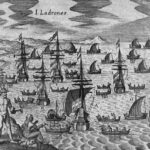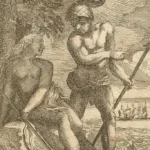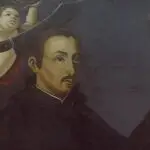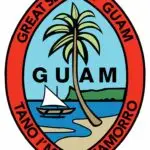Origin of Chamorro as an Ethnic Identifier




First used in the 16th century
Inscribed on the Great Seal of Guam are the words “Tano I’ ManChamorro,” or Land of the Chamorros. Referring to the indigenous population of Guam and the Marianas, the term “Chamorro” is one that has its oldest documented origins in records dating back to the 16th century European expeditions in the Pacific. One of the most widely accepted theories suggests that “Chamorro” is a derivation of the indigenous term “chamorri,” which refers to the high caste in ancient Chamorro society.
The term “Chamurres” was used by the Legazpi expedition of 1565, and appears in other records from the same contact period. By the time of the Jesuit missionary expedition led by Diego Luis de San Vitores a century later, the terms ”Chamorris” and ”Chamorros” were commonly used to refer to the indigenous population.
The word “chamorro” is itself a Spanish term that means “bald,” or “shorn.” It is thus another theory that the name was ascribed to the indigenous population as a direct result of observations of the male physical appearance, which commonly bore the unique characteristic of hair tied in a single knot on an otherwise barren head. Chamorro is also a family name in South America.
And while evidence from the post-contact period may suggest certain origins of the name of this ethnically distinct population, other theories passed on through the culture’s own mechanism for historical preservation – the oral tradition – suggest alternative and equally plausible sources. One theory posits the name evolved during the Spanish colonial period and reflects a combination of the indigenous term “cha’” and the Spanish word meaning “civilized.” Together, the constructed word meant “somewhat civilized,” or “not completely civilized,” and was presumably used to refer to the indigenous population by European observers.
Whether the word that has come to identify the indigenous people of the Mariana Islands had its roots in one or a combination of these theories, what is clear is that the population itself adopted “Chamorro,” also spelled “CHamoru,” as a self-identifier. Gleaned over centuries, the spelling of the word would ultimately become mired in public controversy by the end of the 20th century – evidence of an increasingly visible articulation of the population’s distinct political, cultural, and ethnic identity in the Pacific.
For further reading
Driver, Marjorie G. Guam: A Nomenclatural Chronology. Educational Series No. 5. Mangilao: Micronesian Area Research Center, University of Guam, 1985.
Rogers, Robert. Destiny’s Landfall: A History of Guam. Honolulu: University of Hawai’i Press, 1995.
